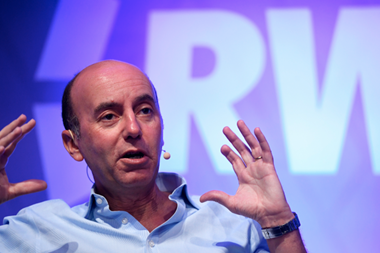The current climate presents an opportunity for retailers to leverage the full spectrum of technological advancement, believes Alvarez & Marsal’s Erin Brookes
Leading retailers have invested heavily in recent years to make digital transformation a strategic priority, spending significant sums on updating legacy IT systems, scaling ecommerce platforms and implementing data and analytics capabilities.
The result is visible in every aspect of the value chain, with chatbots, AI-powered product recommendations and automated warehouses becoming more widespread.
This evolution should continue as digital projects increase in scope and complexity, powered by new technology advancements such as AI.
“Sales growth for companies with higher levels of digital transformation – so-called digital leaders – has been significantly higher than their peers in the past eight years”
But successful digital transformation should also mean getting a return on investment. Research shows that retailers that have continually driven digital transformation have reaped the rewards, achieving substantial financial returns and competitive advantage over time.
Our analysis shows that sales growth for companies with higher levels of digital transformation – so-called digital leaders – has been significantly higher than their peers in the past eight years.
These digital leaders have also enjoyed healthier profit margins, a result of improved efficiency following investments in technology and better returns on assets.
Efficiencies around customer engagement, supply chain optimisation and marketing have ultimately provided a competitive edge, with their slice of the market growing five percentage points since 2014 to 66.5%.
The investment in a strong digital proposition proved vital during the pandemic years. Businesses with a superior omnichannel experience – like Next – were able to rake in sales when physical shops were closed, emerging as the big winners from Covid.
However, three years on from the pandemic, the industry is at an inflection point that threatens to slow down digital leaders’ momentum.
“The competitive advantage enjoyed by early adopters is fading. Technology is becoming cheaper, lowering barriers to entry and allowing laggards to catch up”
The valuation gap between them and those with less sophisticated digital propositions has narrowed considerably in recent years, from 5.2 times in 2015 to just 0.6 times last year.
This suggests that the competitive advantage enjoyed by early adopters is fading. Technology is becoming cheaper, lowering barriers to entry and allowing laggards to catch up.
For digital pioneers, this means a much tougher competitive environment. Asos is an example of a once-disrupter facing pressure from new entrants, such as Chinese fast-fashion retailer Shein and second-hand marketplace Vinted.
The industry is also entering a new phase of more aggressive technological progression that is again disrupting how established players operate.
This new digital dawn, shaped by trends such as AI, sustainability and hyper-personalisation, is not only posing new challenges for digitally advanced retailers but leaving an open door for second movers.
The diminishing advantage of digital leaders is unfolding just as the market undergoes another significant shift, with the growth of ecommerce slowing from pandemic highs and a deepening cost-of-living crisis.
Inflation remains stubbornly high in the UK and, with budgets tight, shoppers are seeking cheaper product offerings that are, in some categories, more prevalent in store. By shopping in person, they are also shunning online delivery and returns fees.
With supermarkets, the migration to discount grocers, which have little to no online presence, has accelerated markedly since the cost-of-living crisis began.
Aldi was the fastest-growing grocer in the UK in June and the discounters now account for 18% of the British market, up from 14% two years ago.
In contrast, online grocery pioneer Ocado is facing challenges as its customers shop less frequently and cut back on the number of items they buy. It is also grappling with rising operating costs hitting margins.
“Consumers continue to flit between digital and physical channels, demanding a seamless, consistent and hyper-personalised journey across all touchpoints”
The question now is how much further the rebalancing has to run and whether it will reverse the long-term secular trend of ecommerce growth.
So far, there is little reason to believe that is the case. Online retail as a percentage of all retail spend remains above pre-Covid levels.
Consumers continue to flit between digital and physical channels, demanding a seamless, consistent and hyper-personalised journey across all touchpoints – physical stores, online platforms, social media and mobile devices. This can only be achieved by putting a truly omnichannel model at the epicentre of digital transformation.
The current climate presents an opportunity for retailers to leverage the full spectrum of technological advancement to refine their business models and ultimately secure a competitive edge.































No comments yet